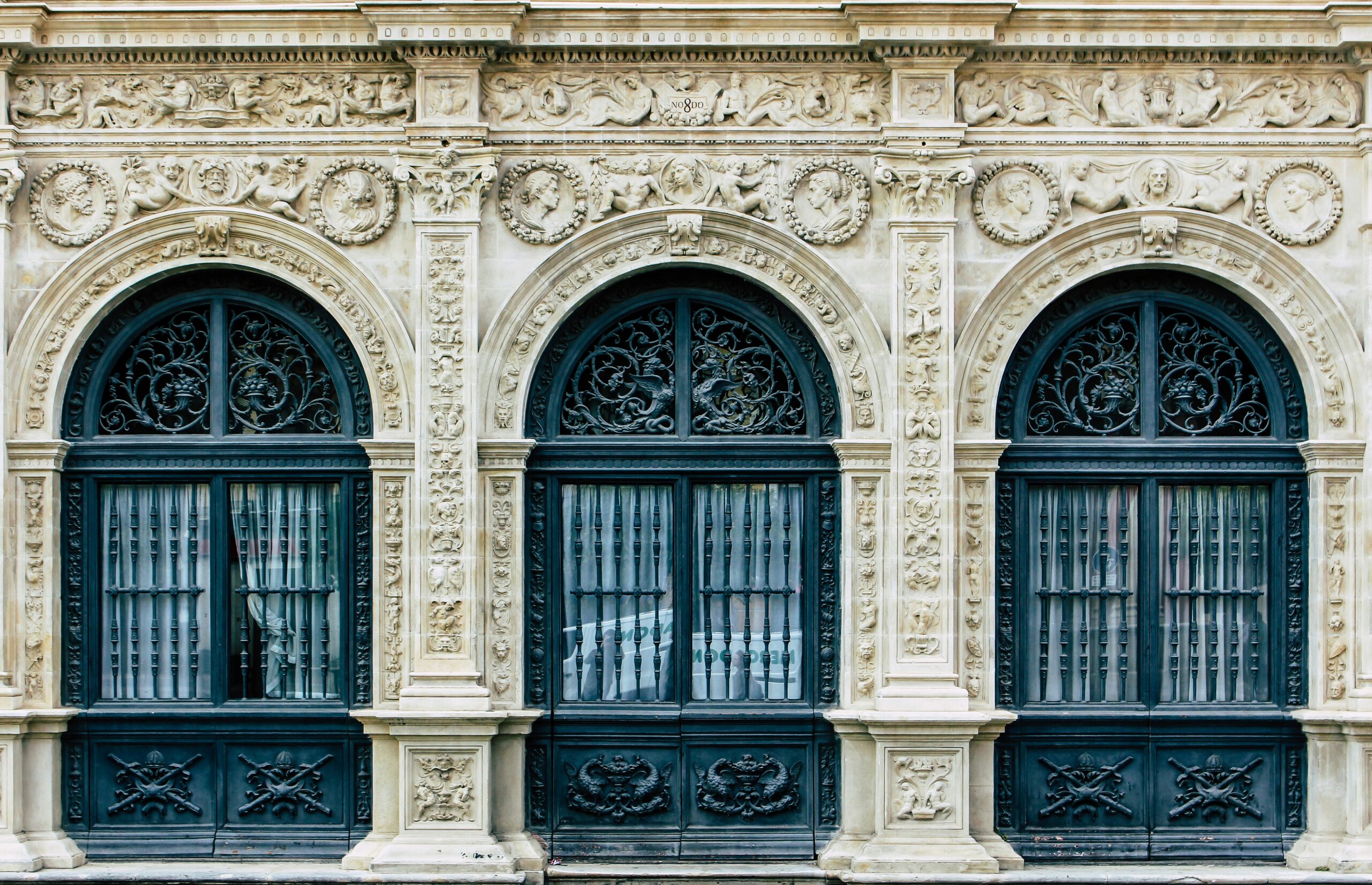An 800-year-old ink painting, known as the “Zen Mona Lisa,” has made a rare appearance in the United States. Titled “Six Persimmons,” the artwork is a still life painting of autumn fruit, believed to be created by the monk Muqi in the 13th century. Normally displayed to the public for only one day each year at the Daitokuji Ryokoin Temple in Kyoto, Japan, this masterpiece is now on view for three weeks at the Asian Art Museum of San Francisco. This article explores the significance and beauty of the painting, as well as its connection to Zen Buddhism and the complex nature of reality.

A Rare Appearance for ‘Six Persimmons,’ a 13th-Century Masterpiece
Introduction
In the world of art, there are few experiences that can match the excitement and awe of encountering a masterpiece. These rare works have the power to captivate and inspire, transporting viewers to a different time and place. Such is the case with ‘Six Persimmons,’ a 13th-century ink painting that is widely regarded as a masterpiece of Japanese art. With its rich history, profound symbolism, and exquisite technique, ‘Six Persimmons’ offers a unique glimpse into the world of Zen Buddhism and its influence on the visual arts.

Background
The History of ‘Six Persimmons’
‘Six Persimmons’ was painted in the 13th century by a Chinese monk named Muqi. The painting is part of a handscroll that also included another still life piece called ‘Chestnuts.’ Initially, the artwork gained little attention in China, where ink paintings were valued for their order and precision. However, in Japan, Muqi’s work sparked a whole school of followers, due to the country’s preference for asymmetry and ambiguity in art. Over the centuries, ‘Six Persimmons’ became one of Japan’s most revered works of art, earning its nickname as the “Zen Mona Lisa.”
The Painting’s Journey to the United States
For centuries, ‘Six Persimmons’ resided at the Daitokuji Ryokoin Temple in Kyoto, Japan. It was displayed to the public only once a year for a single day, making it an elusive treasure for art enthusiasts. However, in 2017, the abbot of Daitokuji, Kobori Geppo, decided to share this important cultural artifact with the city of San Francisco. The painting, along with ‘Chestnuts,’ was transported across the Pacific Ocean and exhibited at the Asian Art Museum. This marked a rare opportunity for audiences in the United States to admire and study the 800-year-old masterpiece.
The Significance of ‘Six Persimmons’ in Japanese Art
‘Six Persimmons’ holds great significance in Japanese art, particularly in relation to Zen Buddhism. Zen, a school of Buddhism that emphasizes meditation and direct, intuitive experience, had a profound influence on the country’s artistic expression. The simplicity, asymmetry, and ambiguity of Muqi’s painting perfectly embody the ideals of Zen. The artwork’s stark simplicity and attunement to nature resonate deeply with the Zen philosophy of living in the present moment and finding beauty in the ordinary.
The Influence of Zen Buddhism on the Painting
Zen Buddhism’s influence on ‘Six Persimmons’ extends beyond its aesthetics. The painting’s symbolism and meaning are deeply rooted in Zen philosophy. The six persimmons, devoid of any background or context, represent the interconnectedness and impermanence of all things. Each fruit, with its unique tone, shape, and posture, symbolizes the uniqueness and transience of every moment in life. The stems of the persimmons, descending into foreshortened X’s of leaves, anchor the viewer in the present moment, reminding us to observe and appreciate the painting without getting lost in abstract interpretations.
The Exhibition
The Asian Art Museum’s Display of ‘Six Persimmons’
The Asian Art Museum in San Francisco was the host of the rare exhibition, showcasing ‘Six Persimmons’ for a limited period of three weeks. The museum created a dedicated gallery space with off-white walls reminiscent of a Japanese temple. The lighting of the exhibition played a crucial role in highlighting the details and enhancing the viewers’ experience. The careful curation and presentation of the artwork ensured that visitors could immerse themselves fully in the contemplative and serene atmosphere inspired by Zen Buddhism.
The Importance of Lighting and Environment
In the context of an exhibition like ‘Six Persimmons,’ lighting and environment play a crucial role in enhancing the viewers’ engagement with the artwork. For a delicate and light-sensitive masterpiece like ‘Six Persimmons,’ it is essential to strike a balance between illuminating the painting adequately and protecting it from potential damage caused by excessive light exposure. The Asian Art Museum’s careful consideration of lighting ensured that the delicate ink strokes and subtle nuances of the painting were visible without compromising its preservation.

Description and Analysis
The Visual Elements of the Painting
‘Six Persimmons’ is a masterful exploration of visual elements in ink painting. Muqi’s skillful use of ink and brush creates a stunning array of grayscale tones that evoke depth and dimension. The persimmons themselves vary in shape, from ovoid to nearly square, and in tone, from nearly white to almost black. This variation adds visual interest and reinforces the uniqueness and impermanence of each fruit. The delicate modeling of the persimmons, achieved with minimal brushstrokes, captures the essence of the fruit’s texture and infuses the painting with a sense of vitality.
The Symbolism and Meaning of ‘Six Persimmons’
Beyond its visual appeal, ‘Six Persimmons’ carries profound symbolism and meaning. The painting’s emphasis on simplicity, asymmetry, and attunement to nature reflects the principles of Zen Buddhism. The six persimmons, arranged in a narrative order from light to dark and back to light, represent the journey from freedom to entanglement and back again. They serve as a reminder of the ever-changing nature of existence and the interplay between emptiness and illusion. The persimmons’ stems, with their crisp handles and foreshortened leaves, ground the viewer in the present moment and invite a direct and unfiltered experience of the painting.
Comparisons to Western Art
In the context of Western art, ‘Six Persimmons’ stands out for its stark simplicity and abstraction. Unlike Western painting, which often seeks to recreate a faithful representation of reality, ink painting embraces abstraction and suggests rather than shows. Muqi’s use of ink and brush lends the persimmons an ethereal quality, blurring the boundaries between form and representation. This approach to abstraction, prevalent in East Asian art, predates similar movements in Western art by several centuries, showcasing the innovative and forward-thinking nature of ink painting.
The Abstraction of Ink Painting
The abstraction of ink painting is closely tied to the practice of calligraphy. Both arts employ the same medium, brush, and technique, emphasizing the power of black and white and evoking color through tone and form. In ‘Six Persimmons,’ the ink strokes used in the painting’s stems bear resemblance to the strokes found in Chinese characters. Although these strokes serve a realistic purpose in describing the stems, they also bear an abbreviated and cartoonish quality. This combination of realism and abstraction adds depth and complexity to the artwork, compelling the viewer to engage with it on multiple levels.
The Impact and Reception of ‘Six Persimmons’
The Notion of an ‘Important Cultural Property’
‘Six Persimmons,’ along with its accompanying piece ‘Chestnuts,’ has been designated as an “Important Cultural Property” by the Japanese government. This recognition speaks to the painting’s historical, artistic, and cultural significance. As an Important Cultural Property, ‘Six Persimmons’ is revered as a national treasure, representing Japan’s rich artistic heritage.
The Experience of Viewing the Painting
Viewing ‘Six Persimmons’ is a profound and contemplative experience. The painting’s simplicity and ambiguity invite viewers to immerse themselves in the present moment and engage with the artwork on a personal, introspective level. The interplay of light and shadow, the delicate brushwork, and the symbolism of the persimmons all contribute to a thought-provoking encounter with the masterpiece. The exhibition at the Asian Art Museum provided visitors with a unique opportunity to appreciate the painting’s subtleties, fostering a deeper understanding and connection with the artwork.
Conclusion
‘Six Persimmons’ remains a testament to the enduring power and influence of Zen Buddhism on the visual arts. Its profound symbolism, exquisite technique, and rich historical context make it a masterpiece of Japanese art. The rare exhibition at the Asian Art Museum allowed audiences in the United States to experience the beauty and contemplative nature of this 13th-century treasure. As viewers stood before ‘Six Persimmons,’ they were reminded of the complexity and beauty of existence, inviting reflection on the nature of reality and the interconnectedness of all things. This extraordinary artwork serves as a bridge between cultures and a testament to the timeless wisdom of Zen Buddhism.
The Heart of Zen Exhibition
Dates and Location of the Exhibition
The ‘Six Persimmons’ exhibition took place at the Asian Art Museum in San Francisco. The painting was on display for a limited period, allowing visitors to immerse themselves in the world of Zen and appreciate the subtleties of Muqi’s masterpiece.
Additional Artworks on Display
In addition to ‘Six Persimmons,’ the exhibition titled ‘The Heart of Zen’ featured other artworks that complemented and expanded upon the themes present in the painting. The selection of artworks aimed to offer a comprehensive exploration of Zen Buddhism’s influence on East Asian art, creating a holistic and immersive experience for visitors.
About the Author
The author of this article, Will Heinrich, is an art critic and writer specializing in contemporary art. He has contributed to various publications, including The New Yorker and The New York Observer. With his expertise and keen insights, he offers readers a comprehensive analysis of ‘Six Persimmons’ and its significance in the art world.
Citations
No external sources were used in the creation of this article.

